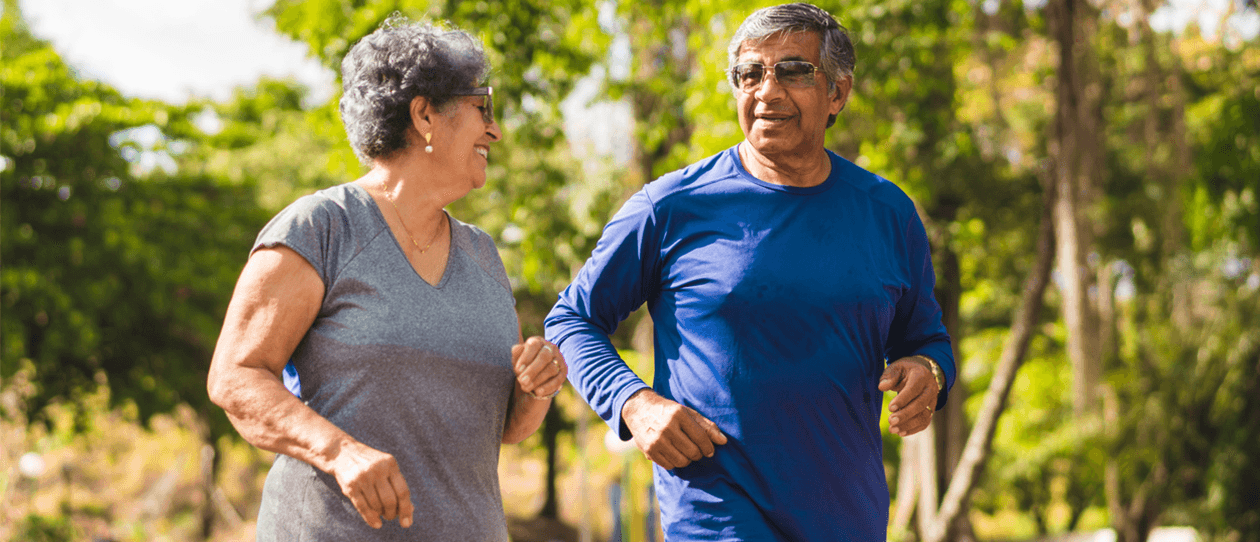
- Health hub/
- Tips & Advice on Improving your Everyday Health/
- Ways you can live a healthier lifestyle


Although it can be challenging to avoid sedentary activities in our busy modern lives, there are steps we can put in place in our daily lives to try to reduce sedentary behaviour and their associated health risks.
Aim to meet physical activity guidelines
Australia’s physical activity guidelines outline how much physical activity you should do. For example, for adults aged 18-64, the recommendations are that they should be active most days, preferably every day. Each week, adults should do either:
- 2.5 to 5 hours of moderate intensity physical activity – such as a brisk walk, golf, mowing the lawn or swimming
- 1.25 to 2.5 hours of vigorous intensity physical activity – such as jogging, aerobics, fast cycling, soccer or netball
- Or an equivalent combination of moderate and vigorous activities
- Include muscle-strengthening activities as part of your daily physical activity on at least 2 days each week. This can be for example, exercises like push ups or squats, lifting weights or household tasks that involve lifting, carrying or digging
Increase your incidental activity
To reduce the chance of your lifestyle falling into the sedentary category, the key is to try and incorporate incidental activity into your day, for example, by parking a little further away from the shops and walking there, getting up every half hour at your desk to stretch or walk around the office, taking the stairs instead of the lift and standing during activities like watching TV, reading emails or while catching public transport. There’s benefit to light activity during the day. For every 20 minutes of sitting, try to stand for eight minutes and move around for two minutes.
It may help to purchase a device that tracks your steps and aim to reach 10,000 steps a day. Even if you can’t reach that amount, any increases will be a positive step towards decreasing sedentary time.
Focus on your nutrition
The effects of a sedentary lifestyle can also lead to poor nutrition. For example, a 2022 Australian Chiropractors Association Survey (ACA): Impact on Health When Working From Home, found 49% have seen the formation of bad habits from working from home including increased COVID-19 kilos, decreased fitness and poor eating habits. Some ACA chiropractors reported an increase in patient’s use of food delivery services and a close proximity to the fridge as the reason for mindless eating.
In addition to eating a healthy diet that meets the Australian Dietary Guidelines, the following tips may be helpful for assisting to optimise your health when you need to engage in sedentary activities in your day.
Eat to maximise energy and focus
Even though sitting at a desk is a sedentary activity, studies show that it can result in low energy levels or fatigue.
- Vitamin B6: Inadequate vitamin B6 in the diet can result in symptoms of weakness, tiredness or fatigue.
- Avoid refined sugars: While it may seem tempting to reach for sugary sweets to keep you going during the day, while they give a quick boost, that feeling fades quickly and can leave you depleted and craving more sweets. Instead opt for foods that are lower in glycaemic index, with slow releasing carbohydrates for longer lasting energy.
- Eating smaller at lunchtime: Avoid an afternoon slump as researchers have observed happens for those who eat a lot at lunch.
- Caffeine can help increase alertness: Having a cup of coffee before going to a meeting or starting on a project can help sharpen your mind, however avoid consuming in large amounts or after 2pm as this can cause insomnia.
- Limit alcohol: If you consume alcohol avoid the sedative effects of drinking alcohol at lunch. Do so at a time when you don't mind having your energy wind down.
- Eat for gut health: The gut microbiome is made up of trillions of microorganisms that live in our gut. A healthy microbiome is one that has a wide variety of the good bacteria, to support the smooth daily operations of the human body. Eat more fibre which provide prebiotics to ferment and feed the good bacteria. Eat foods that contain probiotics, friendly bacteria for the gut. Natural sources of probiotics include fermented foods such as yoghurt, kefir, sauerkraut, miso, pickles and kombucha. Reduce intake of processed foods.
- Watch fat intake: Try to stick to the recommended daily intake to prevent weight gain which may start to present as a challenge to exercise and may start a negative domino effect on your activity levels.
- Iron: Ensure you meet the recommended daily intake for iron. Without enough iron, your body can't produce enough of haemoglobin in red blood cells that enables them to carry oxygen around the body, which can lead to fatigue.
Reduce mental fatigue
Vitamin B6 is required in the production of nerve cell communicators, called neurotransmitters, including serotonin and dopamine. These neurotransmitters play important roles in cognitive function, with sufficient levels of vitamin B6 supporting mental function and focus. However, the body cannot make vitamin B6, so it must be obtained from the diet.
Panax ginseng is an ancient herb that has been used for over 4,000 years. It can also support cognitive function through actions on the neurotransmitters. Additionally, Panax ginseng can reduce mental fatigue, although the exact mechanisms behind its actions in this area are not yet fully understood.
Support your muscles
Having low vitamin D levels is common worldwide. Spending most of the day sitting and indoors has been shown to reduce leg muscle activity and Vitamin D levels. Ensuring you get enough sunlight is important to prevent Vitamin D deficiency.
Getting rid of your muscle pain
Prolonged sitting, long working hours and stressful office environments can lead to physical discomfort, such as musculoskeletal pain.
In addition to seeing your GP or a physical therapist, you may ask them to recommend anti-inflammatory medication or apply anti-inflammatory creams to relieve the pain.
A herb called white willow has been used for over 2,000 years for its analgesic, pain-relieving properties, including for musculoskeletal pain. In a Cochrane research review, white willow bark extract containing 120 to 240 mg of salicin was effective in reducing pain including that in the lower back. Blackmores Ache Relief + Focus is a combination formula containing White willow bark and Panax ginseng extracts, boosted with vitamins B6 and D3. It helps to relieve pain including lower back pain and supports muscle health. Plus, it has the added benefits of supporting energy levels and mental focus when dietary intake is inadequate.

Set up your workspace for comfort
Alarming results from ACA's survey reveal many Australians are putting their health at risk due to home workspaces not being set up correctly.
Many of those working from home reported they worked at their dining table (33%), 16% worked from bed and 15% worked from their sofa rather than at a desk; while 67% reported that since working from home the hours spent working at their computers had increased.
Of the ACA chiropractors who participated in the survey (153), 78% reporting an increase in new patients presenting with spinal health problems as a result of working from home. 89% reported patients had increased neck and shoulder stiffness due to poor ergonomic workspaces. 75% of ACA chiropractors surveyed said the decrease in incidental movement and exercise during the day impacted patients.
The ACA have a range of resources about how to set up an ergonomic workspace environment on their Workspace Week website.
“Implementing positive spinal health habits including using an ergonomic office chair, adjusting your laptop to eye level; and positioning your knees slightly below your hips when sitting, are all important factors in preventing spinal injuries when working from anywhere,” said Dr David Cahill, chiropractor and President of the ACA.
“The Workspace Checklist can assist people to work safely in an ergonomic setting, while using the Straighten Up app to improve posture, stabilise core muscle groups, prevent spinal disability.”
The app also enables users to set reminders so they can maintain good posture and take regular breaks that can help improve spinal health and overall wellbeing when working from anywhere.




